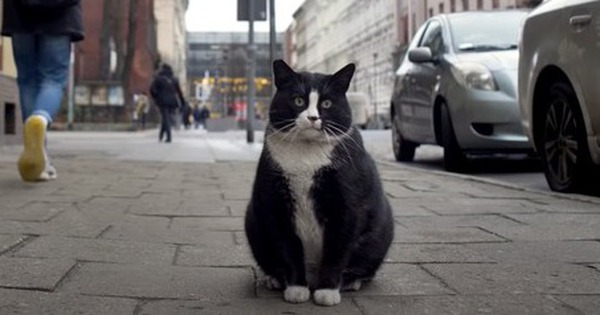Sign up for daily gardening advice and tips
Here are tips for identifying deer damage and keeping deer out of your garden. While deer may appear to be harmless, they can be quite a nuisance around your flowers.
Deer in the Garden

These super grazers leap over all but the tallest fences to devour the stems, leaves, and buds of many types of plants, including arborvitae, fir, alfalfa, and roses. They also eat fruits and vegetables.
Though pilfering is a problem in every season, spring is when deer are particularly destructive, devouring tasty new shoots with single-minded passion. At this time, the does are either pregnant or are nursing fawns, and the bucks are growing antlers (about half an inch each day) and trying to regain lost weight. To winter-weary deer, your borders and bed in the spring are like salad bars, temptingly full of tender fresh produce.
Deer are most comfortable feeding during the low-light hours—dawn and dusk—on the fringes of woods and in gardens that border dense trees. Deer are highly selective eaters, and they focus on whatever plants or plant parts are currently most nutritious. Especially in the spring, deer view gardens as ways to replace nutrients lost over a winter of eating twigs.

How to Identify Deer
Deer are lean and graceful, with a reddish to grayish-brown coat. Bucks have antlers and does do not. Bucks weigh between 200 and 300 pounds, while does weigh between 120 and 175 pounds. They stand at three to four feet tall and live about 16 years in the wild. The distinguishing characteristic of the white-tailed deer is a foot-long tail with long white hairs on the underside, which they raise and wave when frightened.
Although deer are usually quiet, you might hear does make barely audible mews and grunts to fawns. Bucks and does both sometimes emit a whooshing sound when startled. You also might see their cloven hoof prints or bean-shaped droppings.

Deer Damage in Your Garden
Deer will leave jagged damage on your plant leaves. They show distinct preferences to certain types of flowers, so be extra wary of damage to some plants in particular. Plants that are soft to the touch with high water content (like hostas) are favorites, and so are buds, roses, and rhododendrons. Deer don’t seem to like plants with coarse, bristly, fuzzy, or spiny textures, nor do they enjoy those with intense aromas. That said, deer will eat anything if hungry enough.
Control and Prevention
How to Get Rid of Deer
There are many techniques you can try to deter deer from munching on your plants. Try some of these methods for your garden:
- Spray flowers and shrubs with a deer repellent that contains a mixture of dried bovine blood, sulfured eggs, and garlic. These repellents are available at most home and garden stores. They will not harm your plants and are usually effective in deterring deer.
- For another natural deer repellent, combine 1 raw egg, ½ cup of milk, 1 tablespoon of dish detergent, and 1 gallon of water. Lightly spray the mixture over plants. Respray after rain. Or, mix two tablespoons of Tabasco sauce to a gallon of water and spray the foliage and fruit. If it rains, reapply.
- Use scare tactics. Try putting several metal posts 4- to 5-feet-tall around the garden. Attach a metal pie tin to the top of each pole with twine. The least bit of wind makes the pine tins clack with a noise that the deer don’t like.
- Put a transistor radio in your garden and keep it on all night. Switch the station when you think of it. The noise will keep deer away.
- Set up an inexpensive motion detector in your garden. When a deer triggers it, the noise will scare the deer back into the woods.
- Drape fabric netting over plants and (most) deer will stay clear.
- For a natural deer deterrent, scatter dog or human hair around your garden, or hang human hair in pantyhose or mesh bags in trees. Find human hair clippings at a barber shop.
- To keep deer away from apple trees, hang nylon stockings filled with human hair from the limbs so that the clumps of hair are suspended about four feet from the ground. The hair and hose should be changed often.
- Scatter or hang bars of deodorant or cheap motel soap around the garden; if you leave the wrappers on, the soap will last longer. Irish Spring is particularly recommended.
- Mix rotten eggs in water (a dozen or so per 5 gallons) and spray around the perimeter of the garden.
- Spread kitty litter around the edge of the garden.
- Soak old socks in Lysol, spread around garden’s perimeter, and hang from a tree limb or stake.
- One reader, Rick, says, “Smelly old shoes can be used as a deterrent to deer. Just stick the shoes on top of tomato sticks, and watch the deer walk a wide circle around them. My shoes usually last from mid-May until about mid-August. That is, they keep the deer out of my garden for that long. This depends on the amount of rain and how much your shoes smell.”
- You can also drape your unwashed laundry around a low fence, or make a very pungent scarecrow of your unlaundered clothes.
- For a real odor offensive, use predator urine; wolf and coyote urine are sold commercially in most garden stores. (Note: Use a responsible source for predator urine, to make sure that the animals are treated humanely and the brand complies with state and federal regulations.)

Prevent Deer in Your Garden
- Make it tough for deer to browse. Trim off lower branches of trees. No deer wants to waste time picking through your scare yard if there are lush bushes next door.
- Clean up your yard. Don’t leave acorns, rotted fruit, or leaves on your lawn; they are an open invitation to hungry deer.
- For your garden, choose flowers and shrubs that are unpalatable to deer, such as forsythia, lilac bush, marigolds, zinnias, daffodils, lavender and snapdragons. Contact your local cooperative extension for suggestions in your area. See our chart with a list of deer-resistant plants.
- Put strong-smelling plants that deer don’t like on the outside of your garden and smaller plants that need more protection on the inside. Deer tend to stay away from poisonous plants, strongly flavored plants, and plants with hairy or furry leaves.
- The most reliable method is to fence in your garden. Put up a strong, 8-foot-tall metal fence.
See more about critter-resistant plants.




